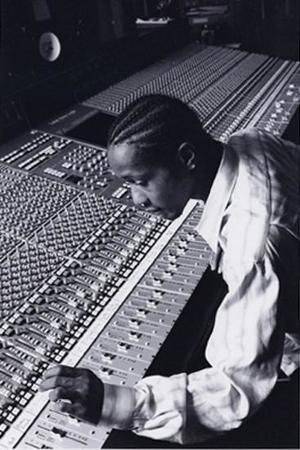Hip-Hop: The Pulse of Culture, Identity, and Revolution
Imagine stepping into a room where the air hums with energy, where every beat, every word, every scratch of a spray can tells a story of resilience, creativity, and defiance. That’s hip-hop-not just a genre, not a fleeting trend, but a living, breathing culture that has shaped the world from the streets of the Bronx to every corner of the globe. Today, we’re diving into its roots, its essence, and its unyielding power to transform consciousness, spark activism, and bridge divides. This isn’t just a history lesson; it’s a journey into the heart of a movement that refuses to be sidelined.
Hip-hop didn’t just appear-it was born out of necessity, a raw response to a world that ignored the voices of the marginalized. Picture the early 1970s: a time when mainstream media offered no reflection of Black and Latino youth, when television screens, magazines, and classrooms erased their existence. In the shadows of this neglect, a spark ignited on August 11, 1973, at 1520 Sedgwick Avenue in the Bronx. A Jamaican immigrant named Clive Campbell-known to the world as Kool Herc-threw a party for his sister Cindy’s birthday. With two turntables and a stack of records, he spun something revolutionary. He didn’t just play songs; he isolated the “breaksâ€-those funky, drum-heavy snippets from James Brown and the Incredible Bongo Band-and looped them into a hypnotic rhythm. For 25 cents admission, a new sound was born, one that would echo far beyond that community center.
Kool Herc wasn’t alone in crafting this movement. He drew from Jamaica’s sound system tradition, where DJs-called selectors-rocked massive outdoor gatherings with reggae beats and vocal improvisations. Herc brought that energy to the Bronx, dubbing his technique the “merry-go-round.†Kids too young or too broke to get into his parties-like an eight-year-old peering from a window across the street-caught the vibe when Herc took the jams outside. No flyers, no formal invites-just a pulsing “jam†that drew crowds to find the source of the sound. Picture kids roaming the neighborhood, chasing the beat like a treasure hunt, dressed in Bruce Lee-inspired gear. Why Bruce Lee? To them, he wasn’t just a martial artist; he was a symbol of discipline and rebellion, a hero who flipped the script on power with every kick.
From those gritty beginnings, hip-hop grew into a culture with four core elements: breaking (dance), emceeing (rapping), graffiti writing (aerosol art), and DJing. These weren’t random hobbies-they were acts of peace, love, unity, and safe fun, as defined by pioneers like Afrika Bambaataa. In 1974, Bambaataa, a former gang leader turned visionary, founded the Zulu Nation, uniting New York’s warring factions under a new banner. He saw hip-hop as a way out, a lifeline for kids who could channel their brilliance into art instead of violence. Imagine thousands of gang members放下æ¦å™¨, picking up mics, spray cans, and turntables instead. That’s the power of hip-hop’s early promise.
Then came Grandmaster Flash, a certified electrician named Gordon Williams who couldn’t land a job in a racist job market. Delivering messages on a bike for a fabric store, he dreamed of seamless sound. He took Kool Herc’s needle-dropping technique and turned it into an art form-cutting and scratching with a makeshift crossfader he built from a microphone toggle switch. At Disco Fever, he let the crowd hear the raw cueing process, a bold move that birthed a sound no one on Earth had heard before. Flash didn’t patent his invention; he gave it to the kids in his neighborhood, a gift to lift them up. Today, every DJ mixer owes a debt to his genius, yet he’s never seen a dime for it.
By 1979, hip-hop hit a crossroads. The Cold Crush Brothers ruled the MC scene with dazzling routines, but a manager named Big Bank Hank swiped rhymes from Grandmaster Caz and dropped them on “Rapper’s Delight.†The Sugar Hill Gang’s hit sold two million copies, thrusting rap into America’s living rooms. It was a triumph-and a fracture. The culture split: one side went corporate, chasing dollars with labels like Sugar Hill and later Def Jam, founded by a young Russell Simmons. The other stayed true to its roots, labeled “underground†by those who saw money as the measure of success. For a community scraping by-where 25 cents once felt like a fortune-the lure of cash was hard to resist. Yet pioneers like Kool Herc, Bambaataa, and Flash held fast, refusing to sell out.
This tension shaped hip-hop’s evolution. In 1981, Curtis Blow signed with Mercury Records, cracking open the floodgates with “The Breaks.†Run-DMC followed, borrowing Cold Crush’s swagger to become titans of the mainstream. Meanwhile, Bambaataa took Zulu Nation global in 1982 with “Planet Rock,†planting seeds of real hip-hop—breaking, emceeing, graffiti, DJing—across continents. From Japan to South Africa, chapters sprang up, teaching the culture’s core: peace, love, unity, and joy. That’s how hip-hop became a worldwide heartbeat.
But back home, the streets were darkening. Crack cocaine flooded New York in 1985, a crisis tied to Reagan-era schemes and corporate greed. Artists like KRS-One fought back with records decrying the epidemic, only to learn some labels were complicit-MCA tangled in money laundering, RCA funding warheads with rap profits. The community fractured further, torn between those who resisted and those who cashed in. In 1987, Bambaataa called a summit at Latin Quarters, urging rappers to unionize and reclaim hip-hop as a global force. It was a vision of unity in a world pulling apart.
Hip-hop’s story isn’t just about music-it’s about identity, survival, and rewriting reality. It flipped English on its head, turning “dope†into praise and “fresh†into swagger. It’s a culture that speaks its own truth, defying a system that tried to silence it. Today, it’s no side hustle-it’s a lifeline. DJs rake in $10,000 for 45 minutes; MCs pull $25,000 a show. From Brooklyn math teachers to retirees, anyone can master an element-breaking, emceeing, graffiti, DJing-and secure a future. It’s not about race, age, or borders; it’s about skill and soul.
At its core, hip-hop is a mirror of nature-cooperation, not competition. It’s the voice inside you, the one that speaks without moving lips, the one that sees beyond time. It’s a call to rename your world, to see divinity in each other, to build a reality where police and communities respect one another, not out of fear, but humanity. Hip-hop started as kids rejecting a society that rejected them, and it’s grown into a global culture that demands we rise together. So, what is hip-hop? It’s life-raw, unfiltered, and infinite. And it’s yours to shape.



